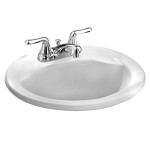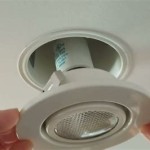How to Fix Broken Bathroom Floor Tiles
Broken bathroom floor tiles can be a source of frustration and a safety hazard. Fortunately, fixing them is a relatively straightforward DIY project that can be accomplished with the right tools and a little patience. This article will guide you through the process of repairing broken bathroom floor tiles, ensuring a smooth and durable finish.
1. Assess the Damage and Gather Supplies
Before starting the repair, it's crucial to determine the extent of the damage. Examine the broken tile carefully, noting any cracks, chips, or loose pieces. If the damage is extensive or the tile is completely shattered, it's best to replace the entire tile. However, if the tile is simply cracked or chipped, you might be able to repair it using epoxy or grout.
Once you've assessed the damage, gather the necessary supplies:
- Chisel and hammer (for removing the broken tile)
- Grout remover (if the grout is damaged)
- Tile saw or tile cutter (for cutting the replacement tile)
- Epoxy or grout (for filling cracks or chips)
- Spatula or trowel (for applying epoxy or grout)
- Sponge or cloth (for cleaning up excess epoxy or grout)
- New tile (if replacing the entire tile)
- Tile adhesive (for attaching the replacement tile)
- Safety glasses and gloves (for protection)
2. Remove the Broken Tile
Start by removing the broken tile. If the tile is completely shattered, you can use a chisel and hammer to break it into smaller pieces and carefully remove them. If the tile is cracked, you can use a grout remover to loosen the grout around the edges of the tile. Once the grout is removed, gently pry the broken tile out with a chisel and hammer. Be cautious not to damage the surrounding tiles.
If the tile is still adhered to the subfloor, you may need to use a utility knife or a scraper to loosen it. Be sure to wear safety glasses to protect your eyes from flying debris.
3. Prepare the Subfloor
After removing the broken tile, it is essential to prepare the subfloor for the new tile or the epoxy/grout repair. Clean the area thoroughly with a damp cloth to remove any dust or debris. If the subfloor is uneven or damaged, you may need to level it using a patching compound or self-leveling concrete.
Once the subfloor is clean and level, you can proceed to the next step, depending on the repair method you choose.
4. Repairing Cracked or Chipped Tiles
For minor cracks or chips, you can use epoxy or grout to fill the damage. Apply epoxy or grout with a spatula or trowel, ensuring it fills the cracks or chips completely. Smooth the surface with a damp finger or a putty knife. Allow the epoxy or grout to dry completely according to the manufacturer's instructions. Once dried, you can apply grout to the edges of the repaired tile to blend it seamlessly with the surrounding tiles.
5. Replacing the Entire Tile
If the tile is completely broken or the damage is extensive, you will need to replace the entire tile. Start by measuring the area where the tile will be placed. Use a tile saw or tile cutter to cut a new tile to the correct size. Be sure to wear safety glasses and gloves while cutting the tile.
Apply tile adhesive to the subfloor using a notched trowel. Ensure that the adhesive is spread evenly and covers the entire area where the tile will be placed. Gently press the new tile into the adhesive, ensuring it is level with the surrounding tiles. Use a level to check the alignment and adjust the tile as needed.
Once the tile is in place, allow the adhesive to dry completely. Once dry, you can grout around the edges of the new tile to blend it seamlessly with the surrounding tiles.
6. Grouting the Tiles
After the epoxy or grout has dried, or after the new tile is installed, apply grout to the edges of the tile. Use a grout float to apply the grout evenly and remove excess grout with a damp sponge. Allow the grout to dry completely before using the floor.
Fixing broken bathroom floor tiles is a relatively easy task that can be accomplished with the right tools and techniques. By following these steps, you can ensure a smooth and durable finish and restore the beauty of your bathroom floor.

How To Repair Ed Floor Tiles Without Replacing Them

How To Manage Ed Tile Joints Pidilite Roff
.png?strip=all)
How To Fix Loose Or Broken Ceramic Floor Tiles

5 Ways To Patch Tile

Precautions For Tile Ing Tips To Repair Ed

How To Repair Ed Floor Tiles Without Replacing Them

How To Repair Chipped Or Broken Tile And Replace Grout

What Are The Causes Of S In Bathroom Tiles Gib Tiling

Solved How To Repair Ed Chipped Tiles Surface Masters

Bathroom Wall Tiles Ing Tile Repair Ceramic
Related Posts







